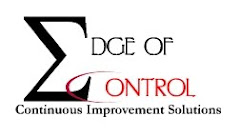One of my favourite business writers is Patrick Lencioni. Recently I reread his book “3 Signs of a Miserable Job”. Once again I was struck by its simplicity and how the philosophy of job satisfaction can be applied to many aspects of life as well as business.
In his book, his theory is that a great job boils down to 3 elements; measurement that is almost instantaneous feedback, not delayed by weeks or months, understanding of an employee’s relevance to the business, their boss and the people they interact with, and people they work with having a genuine interest in them as a person. He puts in the negative though: the three signs of a miserable job are irrelevance, anonymity and immeasurement (his word, not mine!).
Machines are not people but processes are organic! So if you apply the same basic idea, you should be able to get the “perfect process” or 3 signs of a miserable process.
Sign 1: Relevance
o all steps of the process are understood (process map)
o interactions between this process and other process are understood
o people in process understand why they make the product they do, and how it helps the customer and the business
Sign 2: Measurement
o the value each step brings is understood and measured
o process variables that are controllable are measured and reported
o that day’s or that shift’s or that hour’s performance is measured
o corrective action can be associated with the measurement
Sign 3: Identity
o all steps of the process are understood
o interactions between steps and impact of each step is understood at all steps of the process
o cross-functional people interactions occur (ie production meetings)
o the people who are part of the process are known by their names and not just their functions
Identity and measurement are probably the hardest of these to implement. Many organizations have high turnovers so keeping track of who is in what role is often difficult. Measurement is difficult because most systems are set up to only track performance either at the end of the process or on a weekly or monthly basis.
Actually, all three are difficult to implement. Do you know how your processes really work? Do you know the impact you have on the overall business?
Wednesday, June 23, 2010
Monday, June 14, 2010
Launch of Update Web Site!
Hey, just wanted to let people know that the edgeofcontrol.ca website has been updated! We'd love to get your comments on what you think of the design.
Our awesome web designer, Banja Solutions took our ideas and ran with it! Thanks Candace.
Our awesome web designer, Banja Solutions took our ideas and ran with it! Thanks Candace.
Thursday, June 3, 2010
Sometimes you need to reinvent the wheel (Lego Hello World video)
I noticed this video today in a newsletter I get from a manufacturing magazine. This is a case of someone reinventing the printer, but using many different components than what we would normally expect to see.
http://www.youtube.com/watch?v=zX09WnGU6ZY
Lego brings out the fun side of all of us but it can bring out amazing creativity and innovation. The best part about seeing someone make a printer out of Lego is that it makes us think what else can be made of Lego. Once we can think of it being made with Lego, then we need to think about what can be made with things other than Lego.
Just like in this printer, with its electronic components, sometimes we have to use specific materials. But do you need to use polypropylene for your packaging? Do you have to have all the piping in the plant be hardpiped? Can some of them go to soft tubing like they now do in houses?
Take the time to brainstorm, ask yourself "what if" and most importantly "why not?". Do you know your process well enough to see the contraints and if they can be removed?
Reinvent the wheel, but this time try to make it out of something other than wood, rubber and steel!
http://www.youtube.com/watch?v=zX09WnGU6ZY
Lego brings out the fun side of all of us but it can bring out amazing creativity and innovation. The best part about seeing someone make a printer out of Lego is that it makes us think what else can be made of Lego. Once we can think of it being made with Lego, then we need to think about what can be made with things other than Lego.
Just like in this printer, with its electronic components, sometimes we have to use specific materials. But do you need to use polypropylene for your packaging? Do you have to have all the piping in the plant be hardpiped? Can some of them go to soft tubing like they now do in houses?
Take the time to brainstorm, ask yourself "what if" and most importantly "why not?". Do you know your process well enough to see the contraints and if they can be removed?
Reinvent the wheel, but this time try to make it out of something other than wood, rubber and steel!
Subscribe to:
Posts (Atom)




